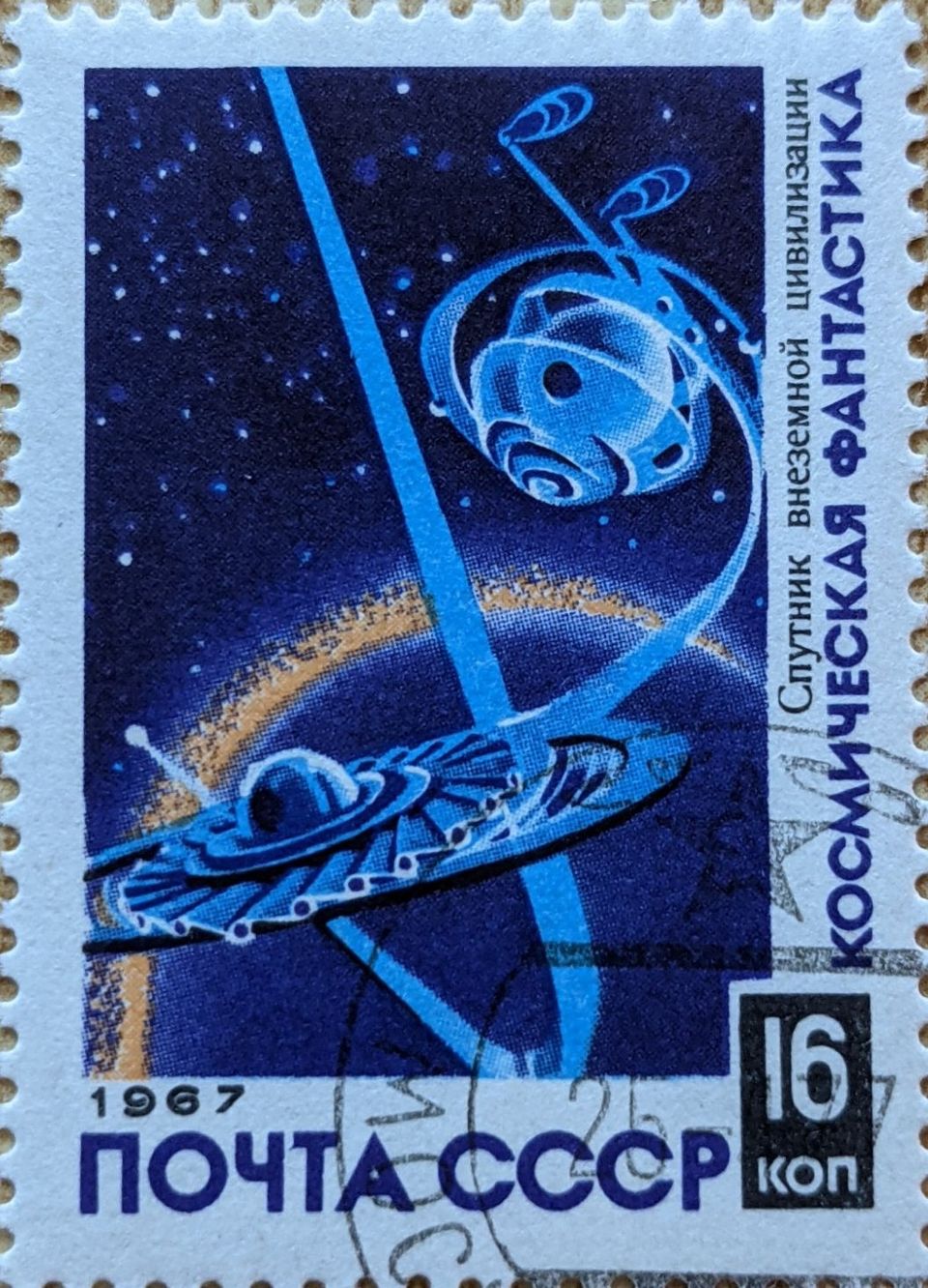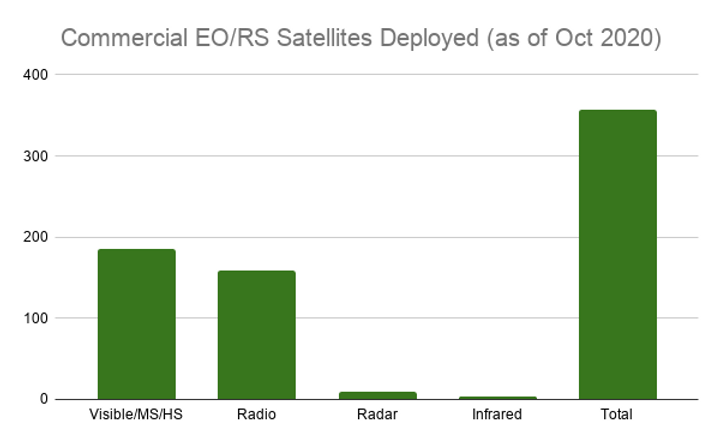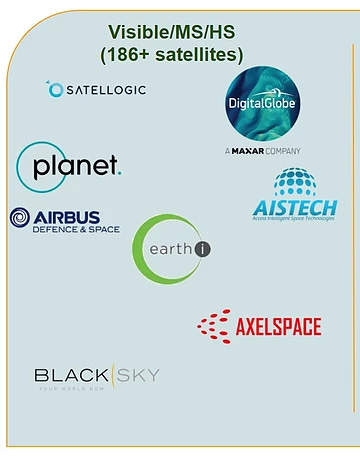Commercial Space-based EO/RS Sector Growth, Part 2

Two weeks ago, I posted “Commercial Space-based EO/RS Sector Growth--Potential to Help with Government Emergency and Response.” Within that analysis, I talked about commercial companies’ growth and their Earth observation (EO) and remote sensing (RS) satellites during the last decade. I noted some possibilities for these commercially-operated EO/RS satellites to help homeland security, disaster, and emergency managers. In the end, I asked several questions:
Does this growth help with some of the issues surrounding smaller numbers of EO/RS satellites that were government-run? What are the products these new companies offer when compared with government products? Can homeland security, disaster, and emergency managers take advantage of these changes in the space-based EO/RS sector?
Let’s shorten that first question even more.
Can the growing number of EO/RS satellites address the issues of government-run systems?
Yes. But there are caveats, which are fixable.
As pointed out in that earlier article, government-run EO/RS satellites, while generally providing excellent products, have other challenges confronting those who aren’t part of the EO/RS community. To reiterate:
- There aren’t many of these satellites, and the ones that exist were expensive to manufacture and launch.
- Because there aren’t many of them, customer missions face prioritization.
- Requested EO/RS products may be received too late or not at all, depending on a customer’s priority.
The last two bullets result from the first part of the first bullet--there aren’t many of them. But commercial EO/RS satellite operators have grown significantly in the last decade.

The very fact there are over 360 commercially-run EO/RS satellites addresses the first problem (at least for those requiring visible spectrum products). And, like dominoes, once the first problem is addressed, the other challenges tumble. Commercial companies still probably use prioritization schemes, but the chances of customers not receiving data on time from their satellites are significantly decreased from ten years ago. The companies might even maintain a “backorder” catalog of areas to help show differences over time.
Commercial visible/multispectral (MS)/hyperspectral (HS) satellites make up the largest share of EO/RS satellites (186+) orbiting the Earth. At least eight companies (shown below) are operating those types of satellites. I’ve left Chinese and Russian companies out because their governments may compromise their products. Also, note that this is not a comprehensive list of all commercial companies in EO/RS.

Satellites providing products in the visible spectrum use their sensors to “see” what’s on the Earth or above it, including human activities and disaster aftermaths. The challenges in working with visible EO/RS sensors, whether government- or commercially-operated, are generally the same challenges we would expect as we use our eyes day-to-day. They can’t see through clouds, fog, or smoke. They can’t see in the dark. They can’t see through walls. In particular, Clouds are a bigger problem than people might imagine, as they tend to cover the Earth about 67% of any given time.
Overcoming Challenges, while Maintaining Others
One way to work around these challenges is to deploy a lot of imagery satellites. At least one commercial company, Planet, operates so many imagery satellites (150+) that it advertises it can image the entire world every 24 hours, seven days a week. This large constellation means there are potentially more opportunities for satellites to collect images of anywhere on Earth. How does this change in imagery availability benefit a disaster manager?
First, a commercial company’s chances of providing that product on-time are pretty good based on how many commercial EO/RS satellites are currently in orbit. Since there are many imagery satellites, like those from Planet, there are plenty of opportunities for at least one or two satellites to image a requested area. Imagine a first-responder contacting a commercial imagery satellite operator, requesting imagery of an area containing a forest fire, looking for hot-spots, etc. And the commercial satellite operator notes a few satellites are flying overhead in the next ten minutes and tasks those to image the area. Then sends that image to the first responder 20-30 minutes (or less) after that. Would that be useful?
Second, the bureaucratic/security layers a disaster responder routinely faces with government/military-run EO/RS satellites would be significantly cut. This is where a caveat comes in: there should be a lot less of that type of overhead with commercial space EO/RS companies. It should be noted the modes of access are still a bit obtuse for some of these companies. For example, it should be simple for a civil official on very urgent business to contact a company like Planet. However, the phone call example provided in the above paragraph is imaginary. Companies such as Planet don’t list a telephone number on their site...for anything.
Not even on the company’s “contact” page. While it’s commendable a company lists its physical addresses, those are useless for urgent tasks. There are the general social media buttons on the site, but those tend to be advertising-focused. Certainly, website email forms are convenient for some sites. Still, my experience with that communication method shows it as not a reliable or fast way to contact a company for an urgent request. Imagine filling out a webform with a smartphone, which we’ve all probably experienced and loathe. Instead, how nice would it be if a common hotline were available for responders to use in urgent requests?
So, yes--in theory, these companies should be easier to work with than the government. That they still appear to have these barriers, including something as fundamental as not posting a contact number (even if it were for an answering service), seems like several business opportunities lost. This is a shame because, for homeland security, emergency management, and response missions, the barriers to commercial space-originated EO/RS products could result in loss of property and, more importantly, loss of life.
We’ll go into some of those commercial products in the subsequent analysis. I’ll compare them with some government products.




Comments ()